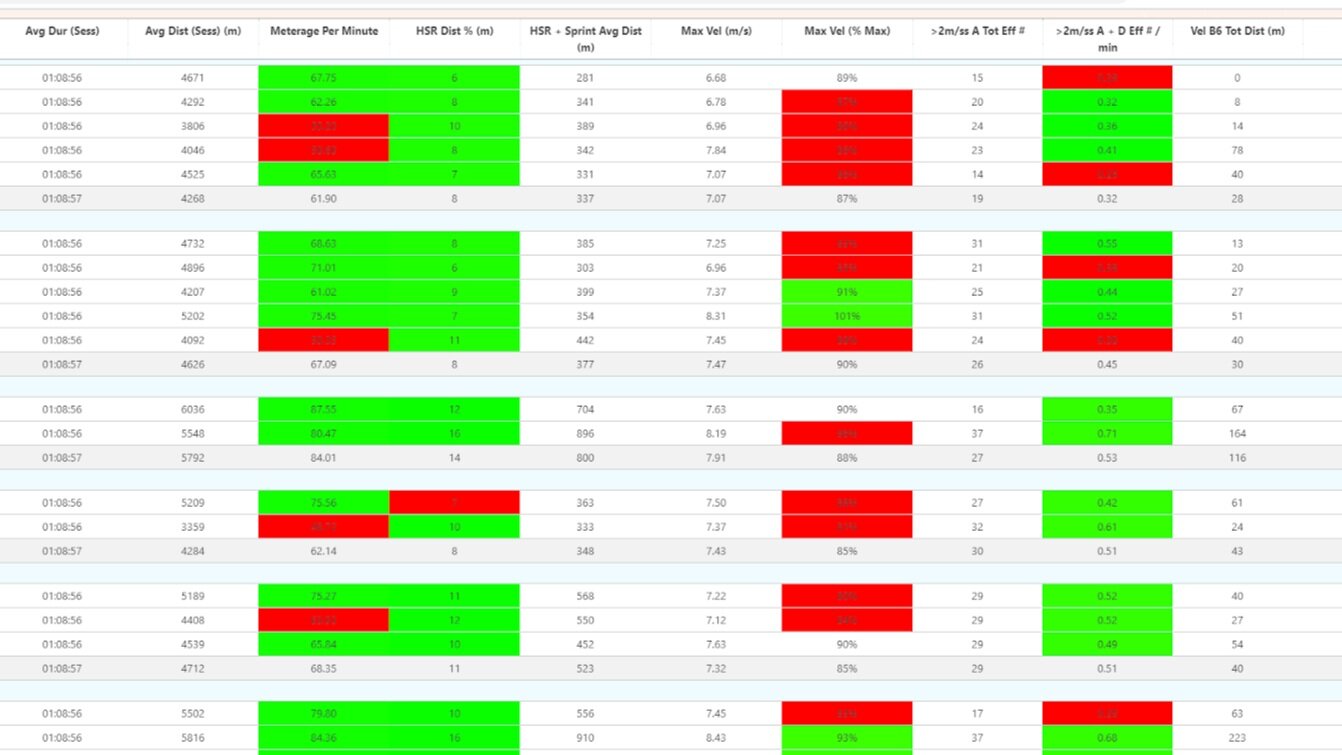How do you know if your athletes have recovered from a game or a training session, on a per session basis? How do you know if your program is working and they are increasing their performance? Using a daily max is a great method for assessing an athlete's recovery and readiness for performance.
Planning training loads for the gym can be done in a number of ways. Traditionally you would test athletes 1RM (or estimated 1rm) at the end of a cycle, or in a preseason testing session, then prescribe certain percentages from this for the next cycle.
For example; Week 1 4x4 @ 80%
Week 2 4x4 @ 82.5%
And so on…
The problem here can be being flexible with a team sports athlete, who has other training demands outside of the gym. If the athlete has had a heavy contact session or a higher than normal game load, travel, etc these can all throw off recovery, and progression may not be appropriate, or they may not be able to complete what is prescribed.
To get around this, you may not even prescribe percentages, and just let the athletes go by “feel” and increase weights from week to week, in a sense this is a form of autoregulation or self-regulation.
The problem with this scenario can be that letting an athlete go by feel can go in 2 directions, you have the guy that loves lifting and will try and set a new PR every session, sometimes to their own detriment. Then there is the other guy who hates lifting and will simply do the minimum or whatever is left on the bar and doesn't really care.
My suggestion to work around both of these scenarios is to use a daily maximal lift, and to use velocity-based training alongside this. It also works well for athletes who crave a bit of intensity and competition.
For example; Monday morning the athletes present for a lower body-based session. After the normal warm-ups, the athlete works up to a very heavy 1 rep maximum on back squats, aiming to keep the speed above 0.35m/s using a velocity (bar speed) measuring device. This speed is around 90-95% of a genuine all-out 1RM for back squats. Once this threshold is reached, the athlete can then begin the “work” sets, using the daily max as a starting point. This initial 1 rep 90-95% 1RM is used as a measuring stick, assessing recovery from the weekend's game, as well as the performance of the athlete.
Warm up: 5x60kg
5x80kg
3x100kg
2x120kg
1x140kg
1x160kg
1x170kg
Working sets: 1x180 @ 0.38m/s
1x185 @ 0.34m/s (daily maximum reached)
4x4 @ 80% (145kg)
A key point, it's important to note that you would intentionally stop adding weights to the bar even if you feel you could lift more once the speed threshold is reached. keeping some in the tank is vital for the recovery aspect. Keeping the speed consistent week to week is important to gauge how things are moving. So even once the 185kg squat was complete, the athlete may feel good, but as they have passed the speed threshold that's it for the day.
Week to week, the idea is that you see some form of progression when moving through a cycle of training. So you may increase the “work sets” % 's or fluctuate the volume.
Week 1: 1x185 @ 0.34m/s, 4x4 @ 80%
Week 2: 1x187.5 @ 0.36m/s, 4x4 @ 82.5%
Week 3: 1x182.5 @ 0.35m/s 4x4 @ 85%
Week 4: 1x190 @ 0.34m/s, 4x4 @87.5%
When doing upper body exercise like bench press 0.20m/s may be more appropriate as different lifts have different speeds. We are currently using Gym Aware as a velocity measuring device.
This method could also be used without a velocity measuring device and would require athletes to be able to gauge effort and speed at different loads, which could be very difficult given their experience level.
I appreciate you reading this far, hopefully, you can take something valuable from this.



























